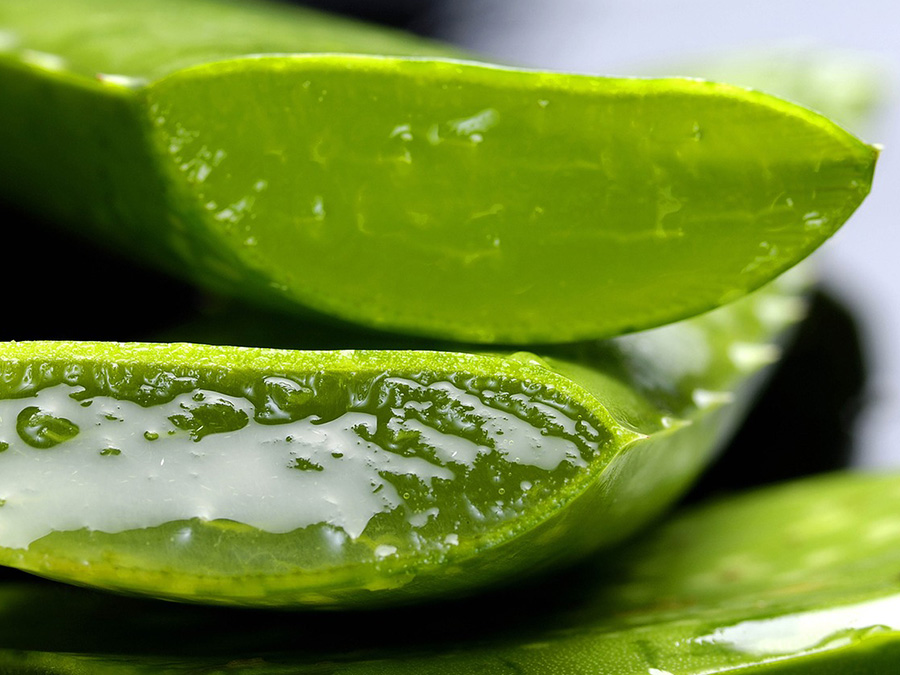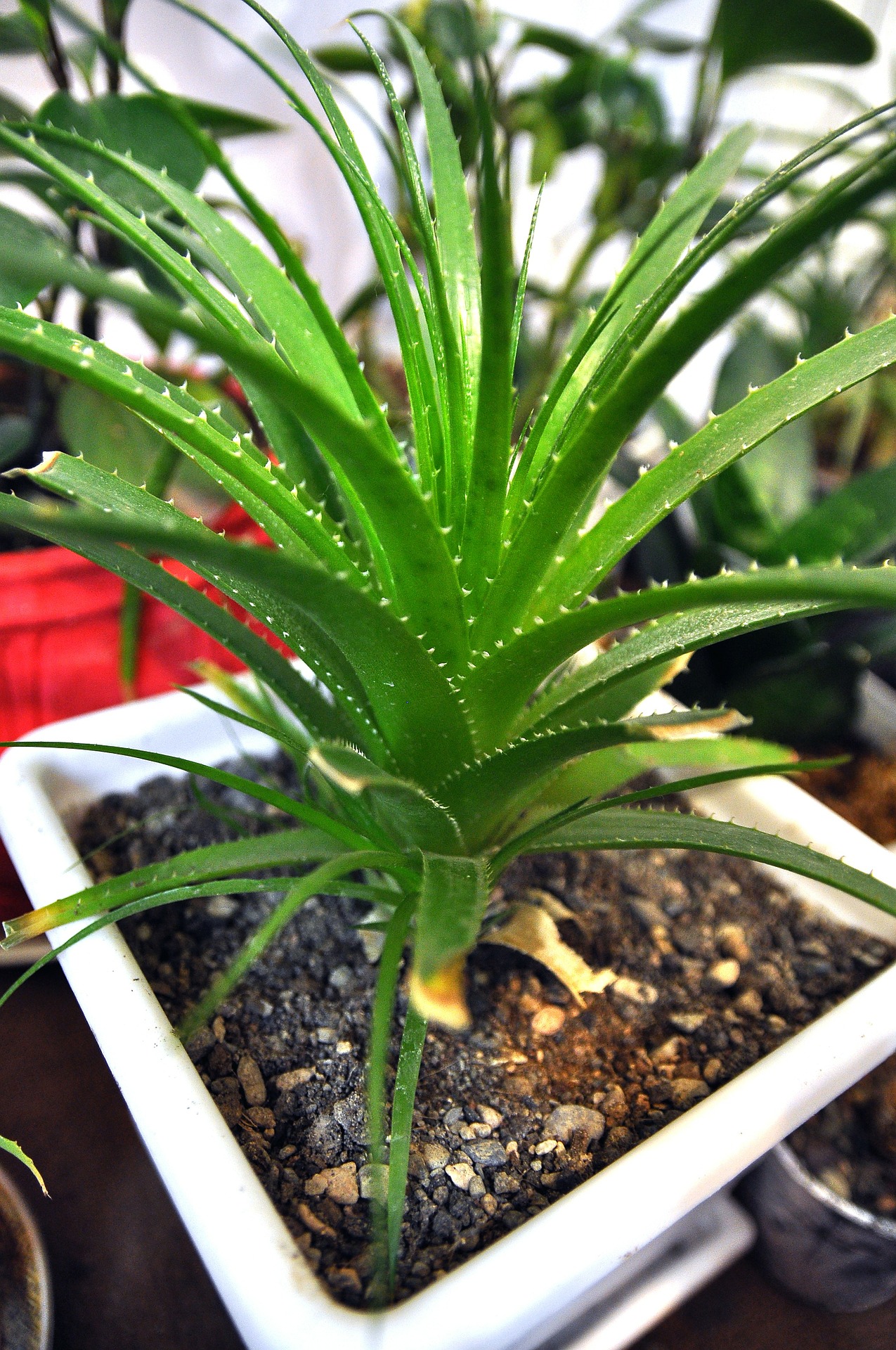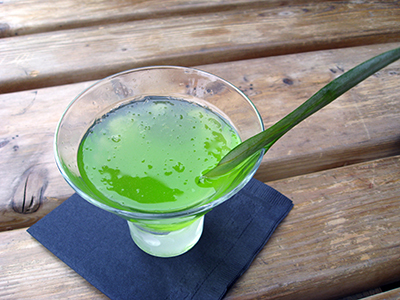Heal Any Skin Trauma Or Irritation With Aloe Vera

Benefits of Aloe Vera Gel
(Aloe Vera or Aloe barbadensis when grown in Barbados)
Introduction Esteemed as an internal or external healing plant for at least 5000 years it is often called ‘The Miracle Plant.’
For any skin trauma or irritation it will heal, soothe and reduce inflammation. Whereas internally its complex compounds can equally soothe all manner of internal damage as well as boost energy, detox, cleanse and fight infection.
 Known as a ‘cell proliferant’ it is able to rapidly encourage new cell and tissue and tissue regeneration, partly via its ‘allontoin’ bio-chemistry.
Known as a ‘cell proliferant’ it is able to rapidly encourage new cell and tissue and tissue regeneration, partly via its ‘allontoin’ bio-chemistry.
Where can you find it? North Africa, India, South America, warmer Mediterranean countries but it is native to South and East Africa.
Commercial growing goes on worldwide but one of the biggest production area is southern Texas, where well drained gritty soil and warm winters allows it to thrive.
Medicinal Uses There are two aspects of Aloe Vera, one as the whole plant and one as the filleted gel or juice.
It is the gel-like fleshy inner leaf that is used for treating all manner of skin wounds and diseases whilst the whole ‘bitter’ plant (eg. to include the rough outer skin and inner ridged latex lining of the Aloe leaf) is a useful laxative.
The Aloe Vera juice (which has not included the leaf’s rough skin and inner lining and therefore laxative qualities) is just the pulp or a gel which is retrieved by a filleting process. However, some brands of aloe vera juice include the ‘whole’ plant and therefore the juice has soothing/healing abilities as well as laxative effects. Be careful to choose the right juice for your requirement!
The key constituent in the ‘whole’ Aloe are barbeloin and these are laxative and bitter. The extracted gel and juice does not contain these and instead have anti-inflammatory compounds which are pain-killing and reduce swelling.
One of the most interesting aspects of Aloe are its MPS or muco-polysaccharides (long chain sugars) which are also found in all human body cells and which are present in both the ‘whole’ and ‘filleted’ Aloe. Production of MPS’s stop after the age of 10 years old in humans, so reliance on plant sources after this age is the only alternative and Aloe Vera has the richest source of all. These long-chain sugars (MPS’s) help boost the immune system by stimulating macrophage production and producing interferon and interleukin which stops viruses from replicating and multiplying.
Aloe Vera bio-chemistry is rich and diverse making it antiviral, antifungal and antibacterial. It is also rich in compounds which improve joint lubrication and improve energy and mobility.
Situations it can help with
- Giving relief and cooling to hot inflamed skin conditions eg. sunburn, fire burns etc
- Will heal wounds and burns and prevent scarring. Used in Canadian hospitals to support chronic burns and to help avoid plastic surgery as it contains cellproliferants and skin regenerative bio-chemistry which forms new tissue.
- It equally brings its moisture binding properties to protect the skin from moisture loss as well as carrying nutrients and moisture down through all skin layers (it also stops mending tissue from pulling too tight and distorting; a huge problem with scar tissue).
- It is naturally non-allergic to all skin types.
- Helps prevent or minimize scars from shingles chicken pox, acne etc.
- All wound healing, eg. boils, lacerations, bed sores.
- Bites, stings, eczema, psoriasis.
- Cystitis (drinking the juice).
- Eases constipation and sluggish bowel and equally aids irritable bowel, diarrhoea and colitis. Use whole plant to stimulate bowel or just use gel/juice to soothe.
- Excellent for soothing gut inflammation / may help to ease bloating.
- Use the inner leaf gel juice after bouts of food poisoning to help soothe and heal the gut.
- Relieves eye, mouth and vaginal infections eg. mucous membranes and delicate tissue.
- Sore throats, mouth abscesses and infection.
- Boosts vitality and energy, helps concentration – do not use late at night as can make you wakeful.
- Restores beneficial gut bacteria and stabilises gastro intestinal upset.
- Rheumatism and Arthritis and all joint mobility and lubrication aids (use internally and externally).
Detoxifier and Cleanser - New research suggests it may help lung and other cancers. It contains substances that prevent the blood supply to cancerous growths. A Japanese study suggests it could help smokers and potential lung cancer.
Parts Used
The whole leaves – used whole and un-filleted to act as purgative/laxative for the bowel. Normally this is powdered and in-capsulated as it’s highly bitter. The whole leaf is also used as a powder to use topically and sometimes internally for some immune situations. The filleted leaves – using just the gel and juice for delicate gut/bowel conditions, for detox/cleansing and to aid the immune system, skin etc. Approximately 50mls daily.
To use fresh leaf – laid straight on burn or wound, chop leaf in half length wise to expose inner sap or cut out fleshy inner gel sap and lay a section on skin. (Be careful not to get spiny outer section on wound –cut away and discard.)
 Applications
Applications
- For ‘Bitter Aloes’ to be used for constipation – capsules of the whole plant.
- For drinking use filleted juice. Purchase organic and cold pressed with minimum citric acid to preserve, eg 0.1%. It can be used on its own or added to other antioxidant rich smoothies or use a lemon and water mix or apple juice.
- Powdered version of dried ‘filleted’ gel –usually in combination products.
Soothing lotions and creams etc can contain high levels of aloe and be very soothing or feeding.|
Gel in tubes is useful to have on hand for sunburns, post hair removal etc. Can also put on and into eyes to soothe and cool.
Nasal Spray you can make your own from the juice, just put into an atomizer and spray up nose for polyps, during colds or hayfever and other allergies.
Contradictions None known. However, not advised during pregnancy (unless under practitioner direction). Consult your practitioner if wanting to use during breastfeeding.
Want to learn more? Enroll on the Herbal Remedies Course today!
Articles on this website are based upon the opinions of their respective author(s). None of the information on this website is intended as medical advice nor replaces the advice of a qualified health care professional.
